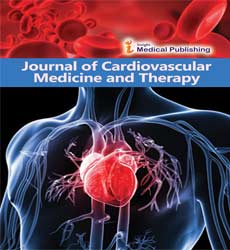An alternative to transvenous lead extraction in selected patients with CIED infections â?? A retrospective outcome study
Abstract
Cardiac implantable electronic devices (CIED) implants are rising in an older, more co-morbid population. The prevalence of CIED infection ranges from 1-4%. Whilst complete extraction of all transvenous hardware is recommended for infected, eroded or pre-eroding CIEDs, this approach is not without risk and may be unacceptable to some patients. Long term data on a more conservative strategy is lacking. We report on our experience of conservative management with pocket revision as a primary strategy in carefully selected patients.
Method: A retrospective review of all CIED revision procedures at a large tertiary centre, over a 7-year period was undertaken with a mean follow up of 39 months. Results: 86 patients underwent 96 revision procedures. 7 patients required further revisions and 13 went on to undergo CIED extraction by the end of follow up. Overall mortality at 12 months was 8.1%, increasing to 24.4% at end of follow up.
Results: There was no in hospital mortality and all patients were alive at 30 days. Overall, 7 (8%) patients had a repeat procedure (including 1 who underwent 3 revisions) and 13 (15%) went on to undergo CIED extraction in the follow up period. Overall, 7 (8.1%) deaths occurred within 12 months of revision. 21 (24.4%) patients died in the follow up period. A higher proportion of patients presenting with erosion died within 12 months of revision (16.67% vs 4.84%). 25% with an eroded device and 11% with a pre-eroding device undergoing revision required an extraction during the follow up period. There was no in hospital mortality and at 30 days all patients were alive in both groups. At 12 months, more patients in the erosion group had died compared to the pre-erosion group (17% vs 5%, p=0.16). This trend continued over the medium term follow up (42% vs 18%, p=0.04). At the last available follow up, 13 (15%) patients went on to a full system extraction; 6/24 (25%) in the erosion group and 7/62 (11%) in the pre-erosion group.
Conclusion: Our data provides important outcome information on an alternative strategy to lead extraction in carefully selected patients where the risk of extraction is perceived to be unacceptable. The absence of systemic infection appears to predict better outcomes than previously reported, and over two-thirds of patients remained complication free at 12 months.
Open Access Journals
- Aquaculture & Veterinary Science
- Chemistry & Chemical Sciences
- Clinical Sciences
- Engineering
- General Science
- Genetics & Molecular Biology
- Health Care & Nursing
- Immunology & Microbiology
- Materials Science
- Mathematics & Physics
- Medical Sciences
- Neurology & Psychiatry
- Oncology & Cancer Science
- Pharmaceutical Sciences
